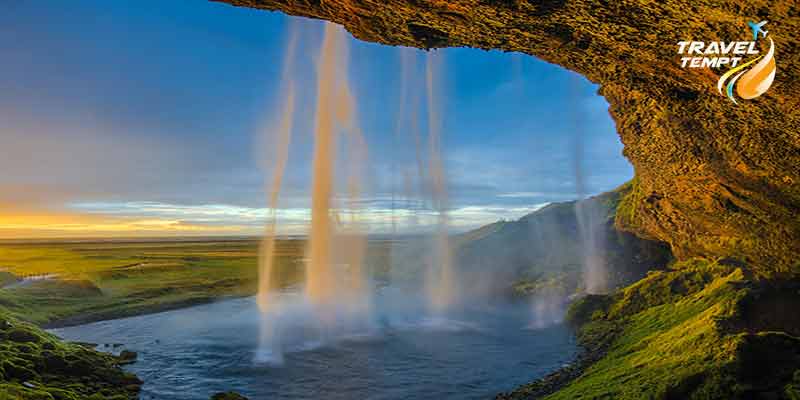Some of the most captivating waterfalls on Earth can be found in Iceland, a country known for its surreal scenery. The waterfalls in Iceland reveal a different tale of the craftsmanship of nature, ranging from roaring cascades diving into foggy chasms to delicate flows gently lowering. We invite you to embark on a journey through the heart of this Nordic wilderness as we reveal the mystery behind the waterfalls in Iceland in this detailed guide.
Also Read: Best Time to Visit Iceland
1. Gullfoss Waterfall
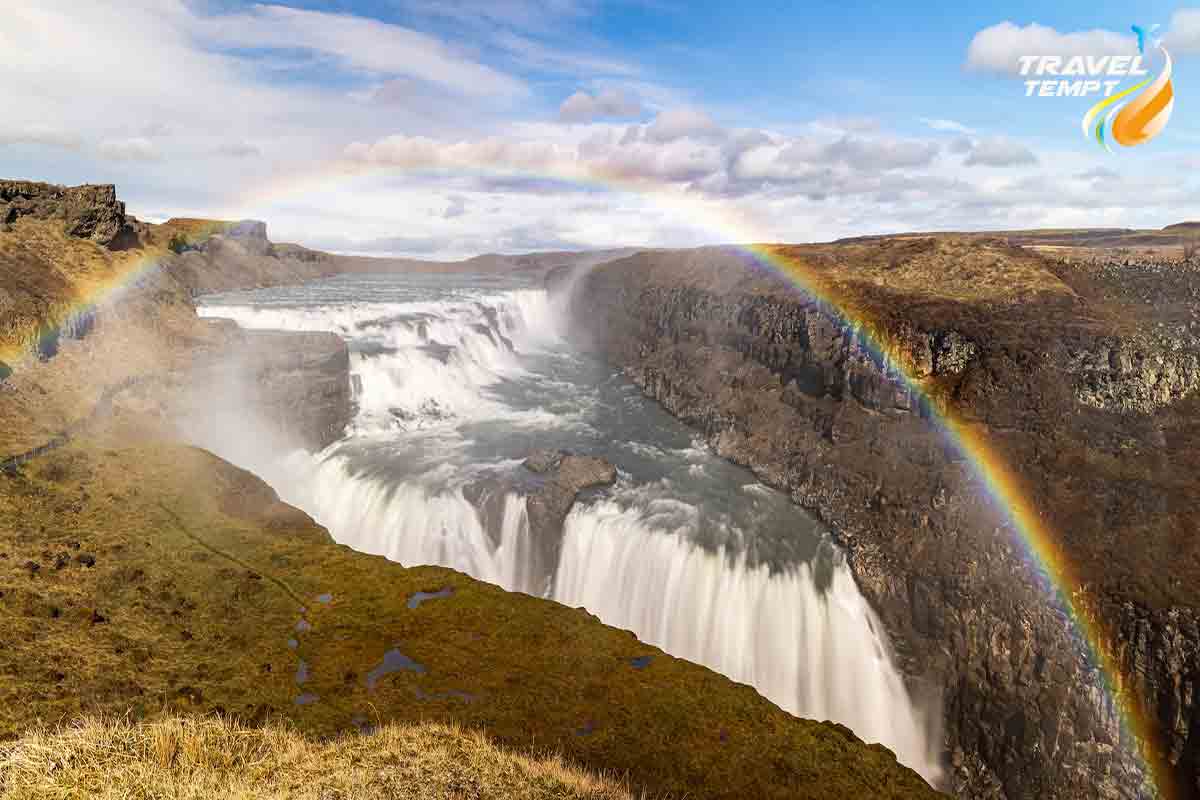
One of the most popular waterfalls in Iceland, Gullfoss is located in the southwest of the country in the canyon of the Hvítá River. The waterfall’s dual tiers are immensely appealing because of their breathtaking beauty and strength.
This Gullfoss waterfall is also known as the Golden Falls. The name “Golden Falls” comes from the golden-colored mist surrounding the cascade on bright days, giving a magnificent aesthetic appearance.
Gullfoss offers a variety of vantage locations for visitors to explore to capture the waterfall from various perspectives. Safe site exploration is made possible by the walkways and platforms, which offer vast views of the surrounding countryside along with up-close looks at the falls.
Gullfoss’ look varies greatly depending on the season. During the winter, the waterfall is frequently surrounded by ice and snow, providing a tranquil and icy landscape. On the other hand, the summer season brings lush greenery to the canyon, presenting a distinct perspective of the Gullfoss waterfall in Iceland.
2. Seljalandsfoss Waterfall
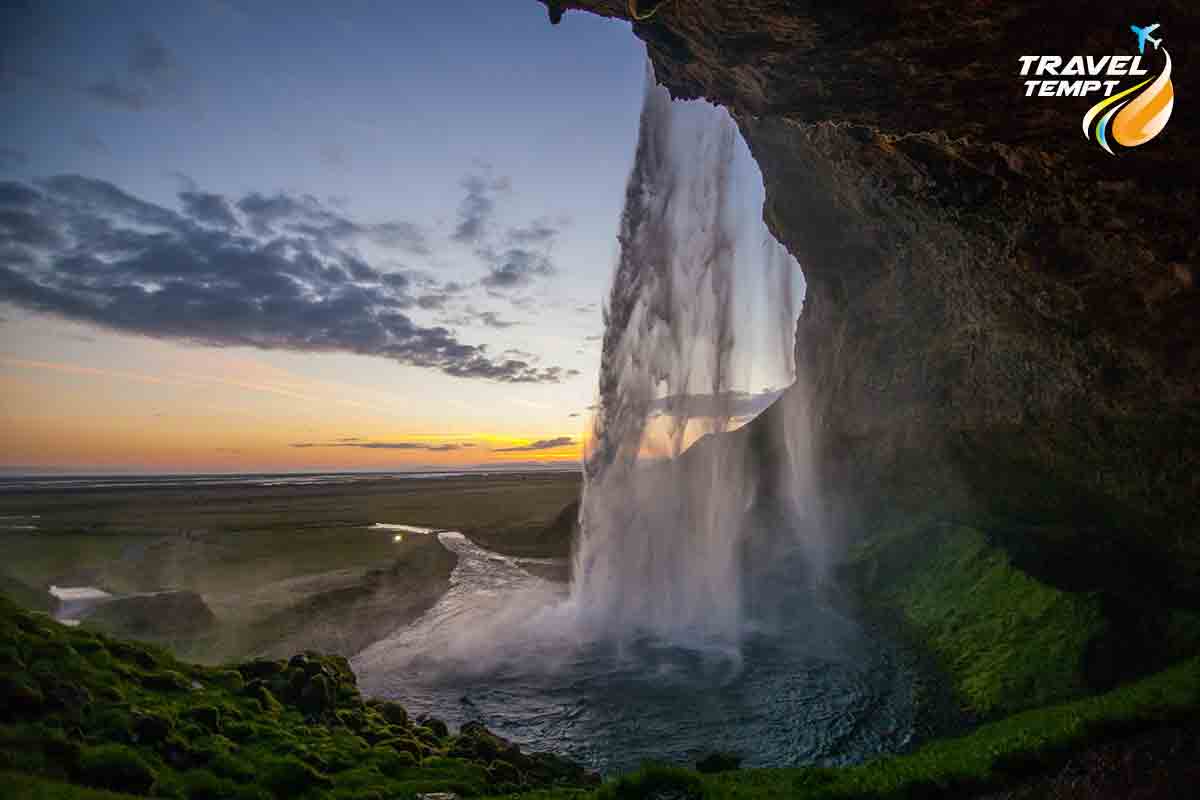
Travelers exploring Iceland’s south coast will find Seljalandsfoss conveniently situated near the Ring Road (Route 1) in the country’s southern region.
This famous waterfall in Iceland is part of the Seljalands River and is roughly 60 meters tall. The chance to stroll behind Seljalandsfoss offers a breathtaking and thrilling experience, which sets it apart from other waterfalls.
It is open year-round for visitors. However, summertime is the most popular time of year because of the longer days and mild temperatures.
The mystical and majestic mood of Seljalandsfoss waterfall is enhanced by its frequent nighttime illumination. In the darker months, these lights are typically on after dusk.
The waterfall is a convenient stop for travelers, with parking, restrooms, and a small café nearby. Whether you want to explore behind the tumbling water curtain or marvel at it from the front, this incredible location provides an unforgettable experience.
Also Read: Diamond Beach
3. Skógafoss Waterfall
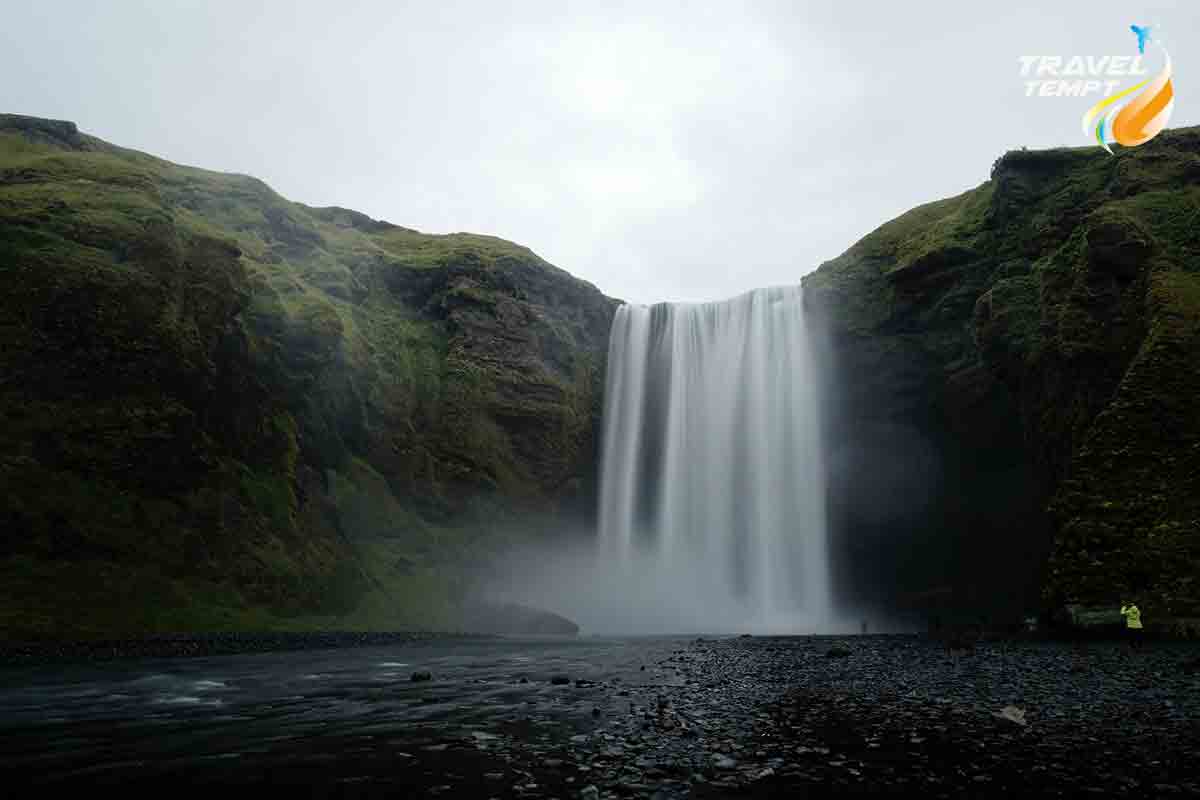
Another stunning and famous waterfall in Iceland is Skógafoss. It’s located in the southern region of Iceland, in the village of Skógar, on the Skógá River. The sheer grandeur of the waterfall and the amount of water cascading over its edge combine to create a breathtaking natural wonder.
The striking contrast between the dark basalt cliffs and the white falling water at Skógafoss makes the places to visit in Iceland. The mist produced by the cascading water typically creates a single or double rainbow in front of the waterfall on sunny days.
It is the starting point of the Fimmvörðuháls Pass hiking trail, which leads to Þórsmörk and is one of Iceland’s most well-known hiking trails. You will pass by some of Iceland’s most breathtaking scenery on this demanding and rewarding journey, which includes glaciers, craters formed by volcanic eruptions, and other waterfalls.
Skógafoss waterfall is connected to regional mythology. Behind the waterfall is thought to be a chest containing treasures. But despite numerous searches, it has never been located.
4. Svartifoss Waterfall
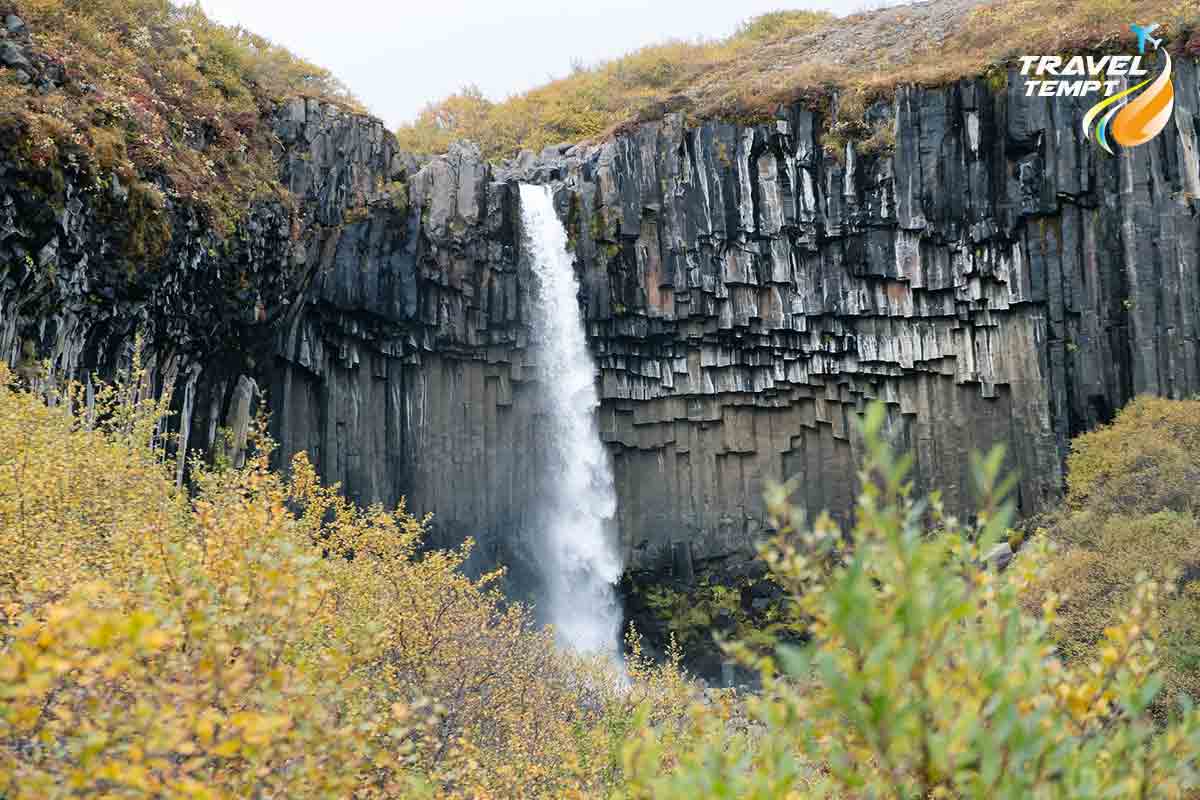
It is a breathtakingly beautiful and distinctive waterfall in southeast Iceland’s Vatnajökull National Park in Skaftafell. Svartifoss waterfall is especially renowned because of the hexagon-shaped basalt columns that encircle it.
The waterfall has a distinctive and lovely backdrop owing to the column produced by the lava cooling slowly. The translation of “Svartifoss” is “Black Falls,” a reference that most likely alludes to the black basalt columns.
Photographers often use Svartifoss as their subject because of the dramatic contrast between the black basalt columns and the white waterfall. During the day, when the basalt columns are most noticeable, it is the ideal time to take pictures.
The park and the waterfall are explained in the Skaftafell Visitor Center. It’s a nice spot to stop for maps, details on the trails, and additional information about the local geology and natural history.
5. Dettifoss Waterfall
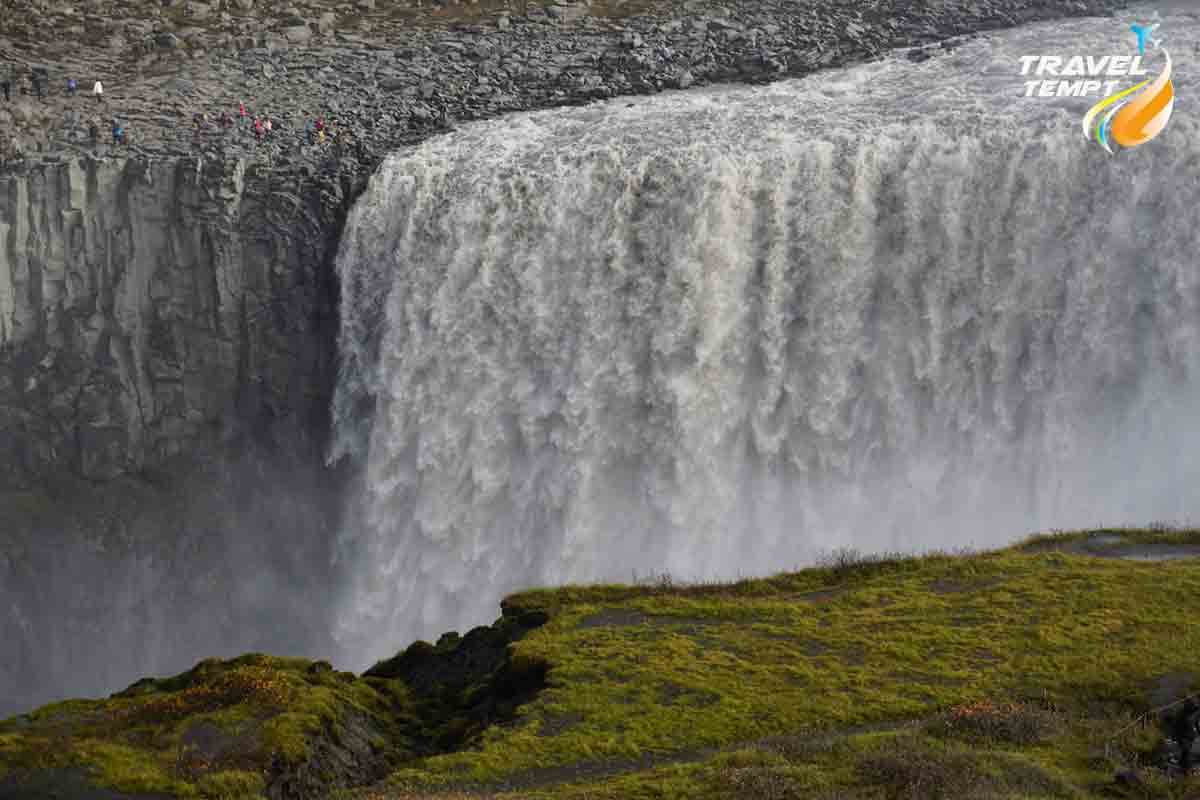
It is one of the largest waterfalls in Europe, located in the Vatnajökull National Park in the northeastern part of the country. Dettifoss waterfall is renowned for its enormous size and power. Its height is about 45 meters, and its width is almost 100 meters.
Dettifoss became famous throughout the world after appearing in the “Prometheus” movie’s opening sequences. The science fiction movie was a good fit for the waterfall’s extraordinary and powerful aspect.
When visiting Dettifoss, be cautious because the area surrounding the waterfall can get wet and slick. There are warnings and safety railings in place to ensure visitor safety.
Also Read: Iceland in January
6. Hraunfossar Waterfall
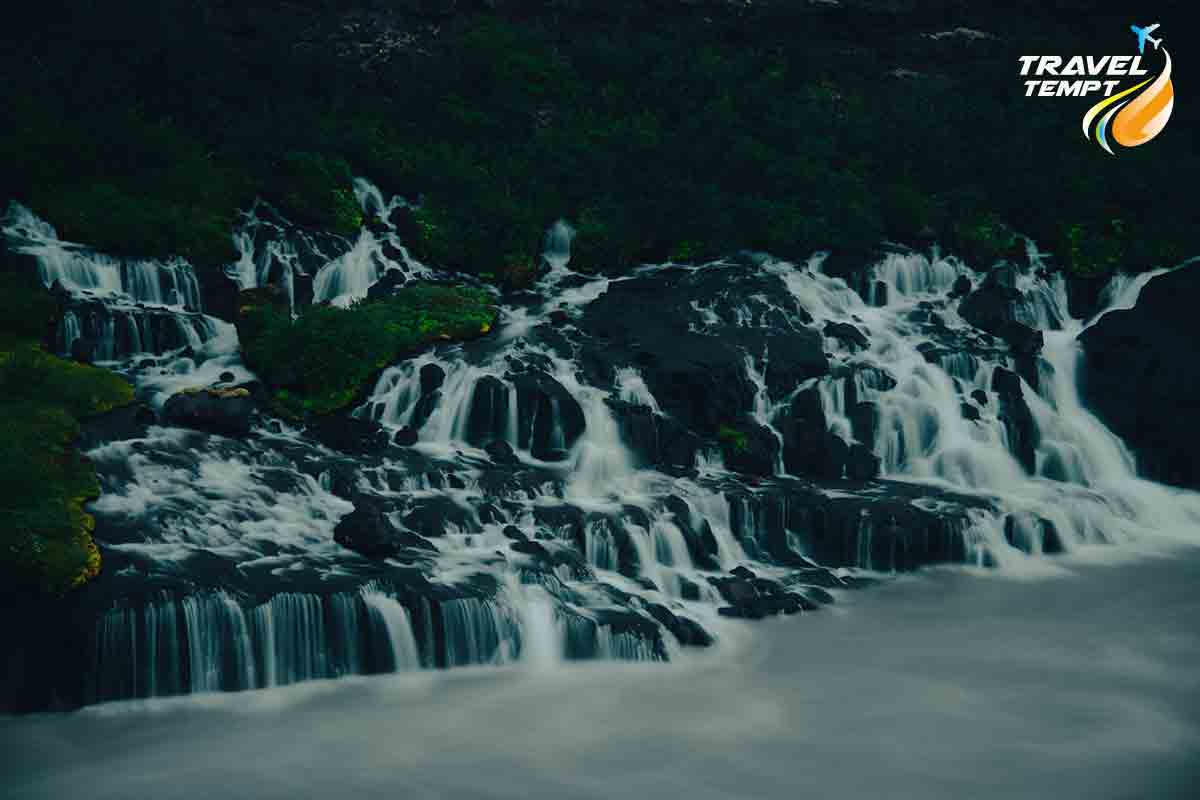
Hraunfossar is a waterfall in western Iceland, close to the village of Hsafell. It is located in the Borgarfjörur region, which is famed for its many natural wonders.
The source of Hraunfossar’s water appears to come straight from a lava field, making for an amazing and unique sight that separates it from other waterfalls.
The black volcanic rocks are beautifully contrasted with the flowing water as it emerge in a series of little waterfalls and cascades. The water has a bluish tint and is very transparent.
There are other attractions in the area besides Hraunfossar. You can also go to the nearby Barnafoss waterfall, which is popular for its striking rock formations and dramatic history.
Hraunfossar is a stunning and unusual natural landmark that provides a calming and ethereal experience. If you plan to explore Iceland’s western region and its many natural attractions, this place is a must-see travel destination.
7. Barnafoss Waterfall
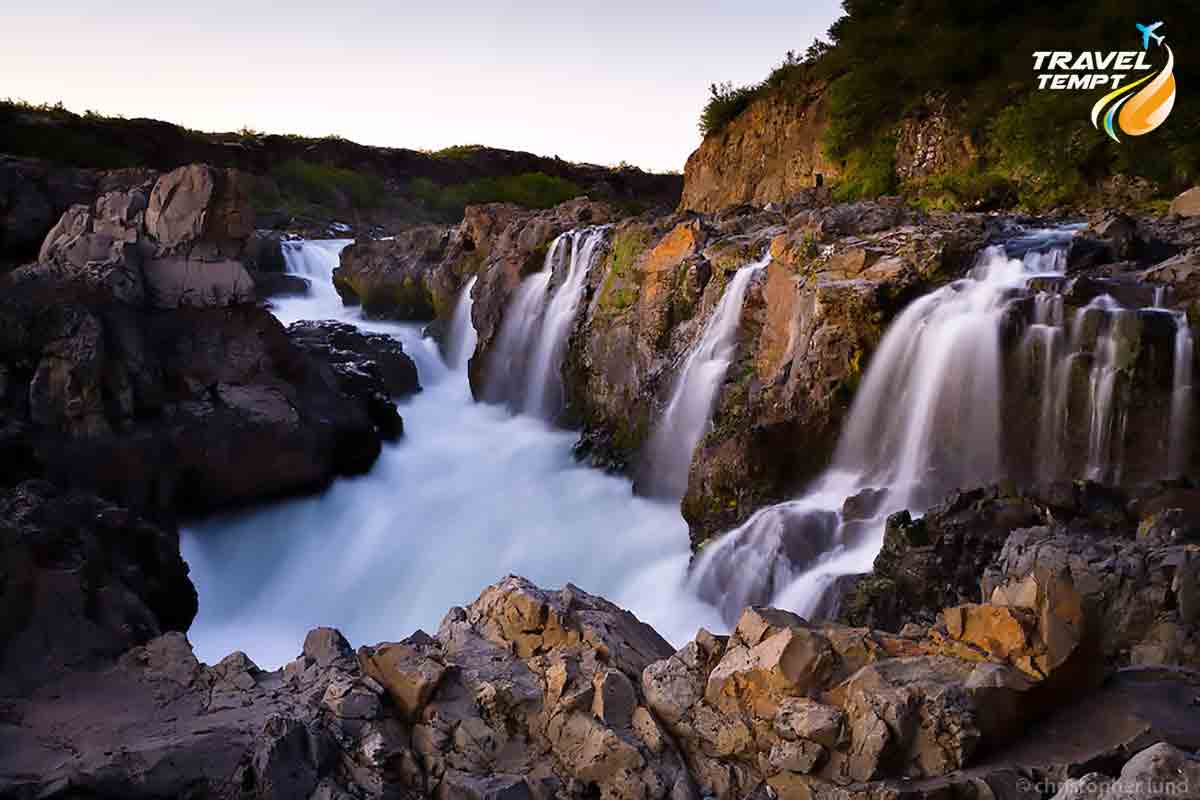
A waterfall in western Iceland called Barnafoss, or the “Children’s Falls,” is renowned for its unusual rock formations and notable past.
It is situated in Iceland’s west and adjacent to the lava waterfall Hraunfossar and the town of Húsafell.
The river Hvítá creates Barnafoss, a series of rapids and cascades as it runs through a narrow canyon. The canyon is mesmerizing due to the distinct rock formations and the way the river flows through it.
In the seventeenth century, a stone arch bridge was constructed over the HviŁtá River close to Barnafoss called Barnafossbrú. This bridge offers an excellent vantage point for seeing the waterfall and its neighboring areas.
Also Read: Iceland in November
8. Aldeyjarfoss Waterfall
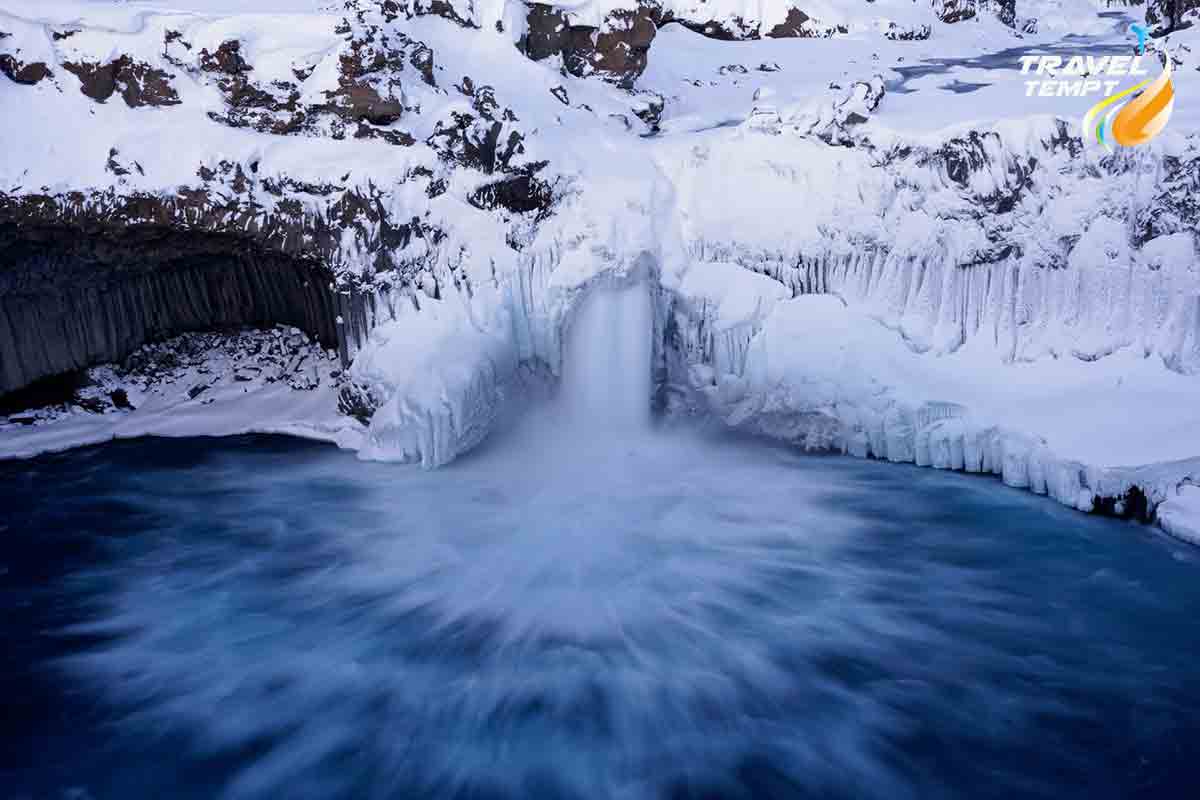
In Iceland’s northern highlands lies Aldeyjarfoss, a beautiful and somewhat isolated waterfall. It is well-known for both its secluded, untamed beauty and its unusual basalt column formations.
It’s situated in the Skjálfandafljót River, a little off the main trail and close to Goðafoss, a more famous waterfall.
The waterfall is an even more spectacular sight when viewed against the backdrop of rugged, desolate surroundings. Its far-off position increases the feeling of wilderness and seclusion. From June to September, while the Highlands’ F-roads are open, visitors can usually visit Aldeyjarfoss.
For those who are ready to travel into the isolated Iceland Mountains, Aldeyjarfoss offers a singular and spectacular experience. If you’re looking for a more off-the-beaten-path excursion, this hidden gem is well worth discovering with its mix of rough terrain and basalt columns.
9. Goðafoss Waterfall
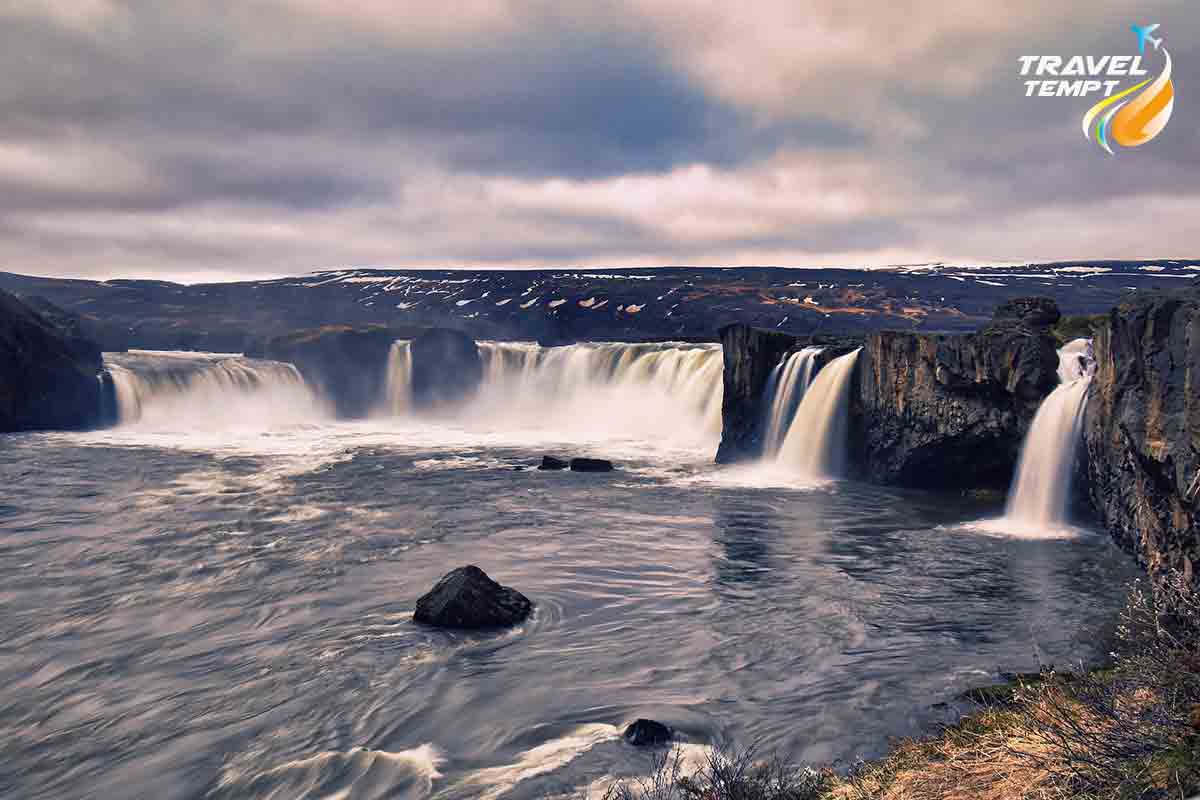
Godafoss, popularly known as the “Waterfall of the Gods,” is the biggest waterfalls in Iceland with historical significance. Godafoss is located in northern Iceland on the Skjálfandafljót River. It’s roughly 30 kilometers east of Akureyri, Iceland’s largest city.
The cascade Goðafoss is conveniently located along the Ring Road (Road no. 1) in Iceland’s northern region. The waterfall has excellent trails on its east and west faces, and both summer and wintertime views are equally breathtaking.
Spending time admiring Godafoss’s majesty is the ideal thing to do there. There are many places to sit close to the edge of the rocks, but proceed with extreme caution when doing so. Even on sunny, dry days, there’s a lot of mist flying everywhere and it gets slick. Pack a little meal for yourself and you’ll thank me later.
Conclusion
The spectacular landscapes of Iceland are well-known, and these waterfalls in Iceland are only a little taste of what you might discover when traveling to this magnificent nation. However, accessibility and conditions to these waterfalls can change depending on the season, so it’s important to check ahead, particularly if you want to visit in the winter.
